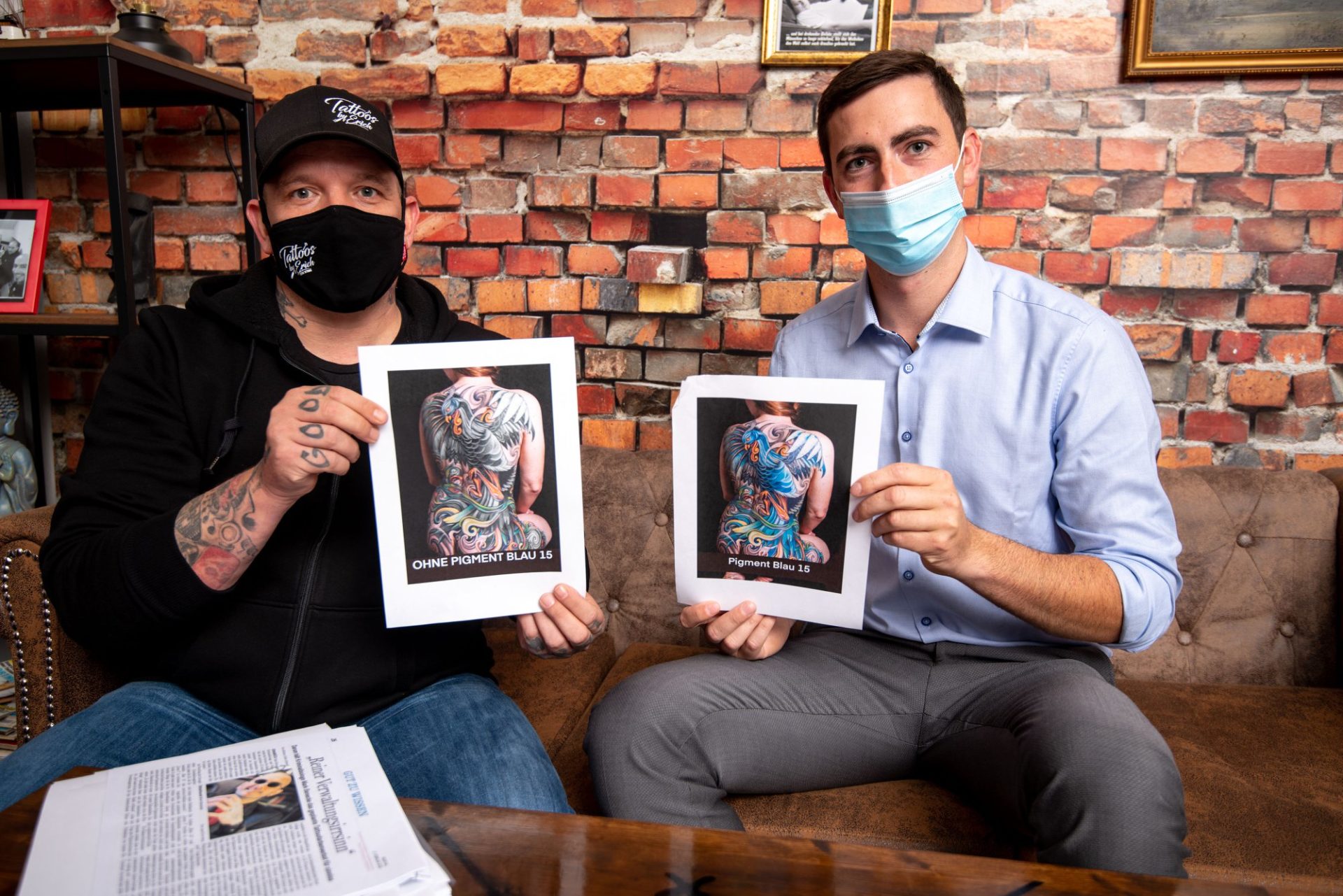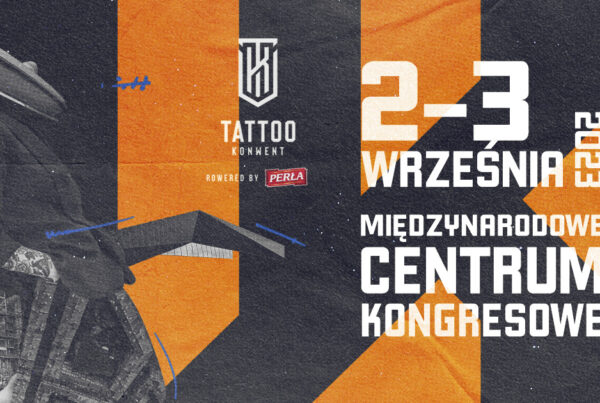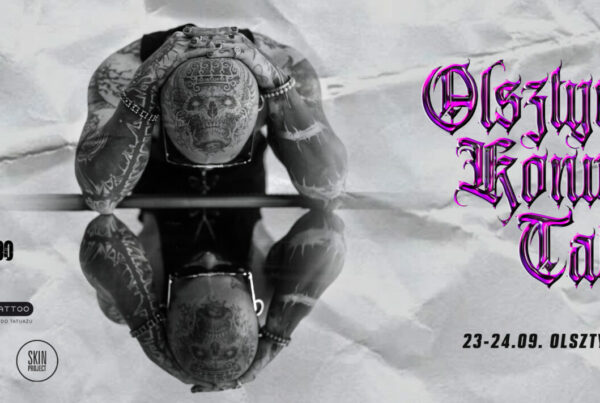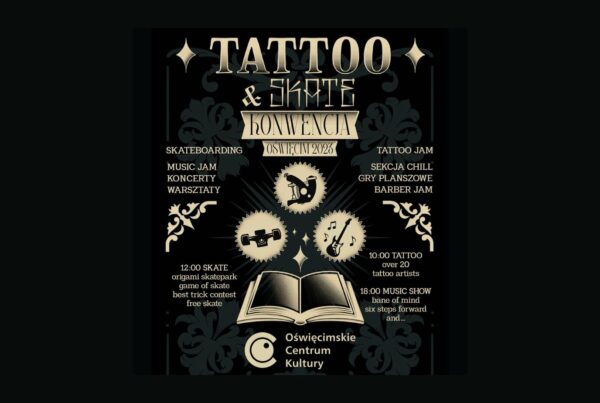THIS ARTICLE HAS BEEN WRITTEN IN TWO LANGUAGES
Is there an end for colourful tattoos in Europe? European Commision has been trying for a long time to completely ban the usage of two pigments: blue no. 15 and green no. 7 in the tattoo industry. On 21st of January 2020 ECHA proposed to restrict over 4 000 substances in tattoo inks and permanent make up. Some of these substances are already restricted under the EU’s Cosmetic Products Regulation and are not allowed to be used on the skin. What does this mean for the tattooers? I am talking with Michael Dirks, a chemistry engineer, who is one of the people involved in „Save the Pigments” project.
Czy koniec z kolorowymi tatuażami w Europie? Komisja Europejska od dawna stara się całkowicie zakazać stosowania dwóch pigmentów: niebieskiego nr. 15 i zielonego nr. 7 w branży tatuażu. 21 stycznia 2020r ECHA – Europejska Agencja Chemikaliów, zaproponowała ograniczenie stosowania ponad 4 000 substancji zawartych tuszach do tatuażu i makijażu permanentnym Niektóre z nich są już w tym momencie objęte restrykcjami, nałożonymi na mocy Rozporządzenia Parlamentu Europejskiego i Rady w sprawie produktów kosmetycznych, przez co nie mogą być bezpośrednio nakładane na skórę. Z czym wiązałoby się ich całkowite wykluczenie z użycia dla producentów, artystów oraz klientów salonów tatuażu? Rozmawiam z Michaelem Dirksem, inżynierem chemii, który jest jedną z osób zaangażowanych w akcję „Save the Pigments”.
Pigments under ECHA supervision
M.W.: Why does the ECHA want to ban blue pigment no. 15 and green pigment no. 7? What are their arguments?
M.D.: This is a little bit of a complex topic, because we need to go back in time to the 2000. About that time the Council of Europe started to influence the tattoo industry by their regulations and recomendations. They somehow compared tattooing to the cosmetics niche. Actually that comparison was completely wrong, because cosmetics as we all know, are applied on the skin not under the skin. Council of Europe continued to debate on that topic regularly during these years, coming up with new recommendations. I must stress at this point that all of their resolutions are not law. The other recommendation, one which strongly affected the whole industry, was the resolution from 2008 about requirements and criteria for the safety of tattoos and permanent make-up.They came up with a special list of substances that are not allowed to distribute in the cosmetics and tattoo industry. If a particular ingredient of the pigment, in this case contained in tattoo ink, was on that list, it could not be used. In this way, one of the green pigments was withdrawn from the market, but luckily producers found a substitute for it.
This year ECHA came up with a new resolution proposed to restrict over 4 000 substances. These are not only used in tattoo inks and permanent make-up. This issue is not only connected with pigments blue no. 15 and green no. 7; these two are only the top of the iceberg. I will try to explain it in the easiest way possible. With the rising popularity of tattooing the risk of getting an adverse health effects to the certain people also increased. That’s understandable. A small percentage of the population will always have an allergic reaction to certain tattoo ink. However, blue pigment no. 15 and green pigment no. 7 are completely safe for most of us and widely tested. Their withdrawal will have catastrophic consequences for the entire tattoo industry because there are no qualitative substitutes for these substances.
Tusze do tatuażu kontra ECHA
M.W.: Dlaczego ECHA chce zakazać stosowania pgmentu niebieskiego numer 15 i zielonego numer 7? Jakie są ich argumenty?
M.D.: Cóż, jest to bardzo złożony temat i żeby go zrozumieć musimy cofnąć się do roku 2000. Mniej więcej w tym czasie Rada Europy zaczęła znacząco wpływać na przemysł tatuażu za pomocą swoich rekomendacji. Porównali oni wówczas tatuaż do branży kosmetycznej, co w rzeczywistości jest stwierdzeniem błędnym, ponieważ kosmetyki, jak wszyscy wiemy, są nakładane na skórę, a nie pod skórę. W ciągu tych lat Rada Europy regularnie debatowała na ten temat, przedstawiając nowe zalecenia i rezolucje. Muszę w tym miejscu podkreślić, że wszystkie ich zalecenie nie są prawnie usankcjonowane w krajach członkowskich. Drugą rezolucją, która wywarła silny wpływ na tę branżę, była ta z 2008 roku w sprawie wymogów oraz kryteriów dotyczących bezpieczeństwa tatuaży i makijażu permanentnego. Przedstawiono w niej specjalny wykaz substancji, jakie nie powinny zostać dopuszczone do obrotu na rynku kosmetycznym. Jeżeli konkretny składnik pigmentu, w tym przypadku zawarty również w danym tuszu do tatuażu, figurował na liście, pigment musiał być wycofany ze sprzedaży. W ten sposób jeden z zielonych barwników zniknął z rynku, ale na szczęście producenci znaleźli dla niego substytut.
W tym roku ECHA przedstawiła nową rezolucję, w której zaproponowała ograniczenie stosowania ponad 4 tysięcy substancji. Cóż, są one zawarte nie tylko w tuszach do tatuażu i makijażu permanentnego. Kwestia ta wiąże się z pigmentami niebieskimi nr. 15 i zielonym nr 7; choć w zasadzie te dwa są jedynie wierzchołkiem góry lodowej. Postaram się to jak najłatwiej wyjaśnić. Wraz z rosnącą popularnością tatuażu, wzrasta również ryzyko wystąpienia reakcji alergicznej. To zrozumiałe. Niewielki procent populacji zawsze może w sposób nieprzewidziany zareagować na pewne składniki. Jednakże, niebieski pigment nr. 15 i zielony pigment nr. 7 są całkowicie bezpieczne dla większości z nas oraz zostały szeroko przebadane pod tym kątem. Ich wycofanie będzie miało katastrofalne skutki dla całej branży tatuażu, ponieważ nie ma jakościowych substytutów tych substancji.
Consequences of withdrawal
M.W.: How will the withdrawal of blue and green pigments affect the whole tattoo industry?
M.D.: As I said, due to the previous resolutions we already lost one pigment – green no. 7 but no one recognized it. It was because tattoo ink manufacturers found a substitute good enough to replace this substance – green no. 36 which is the same molecule, but has different structures in the outer layer. This substitute was not on the list, so it could be used legally. Unfortunately, in the case of blue pigment no. 15, we are not able to change its molecular structure this way. What does this mean for the whole industry? Well, the lack of this pigment will make not only all blue pigments disappear from the market, but also their derivatives like petrol and turquise.
Konsekwencje wycofania pigmentów
M.W.: Jak wycofywania niebieskiego i zielonego pigmentu wpłynie na całą branżę tatuażu?
M.D.: Jak już wspominałem; z powodu wcześniejszych postanowień zielony nr. 7 został wycofany z użytku w przemyśle kosmetycznym, ale nikt się o tym nie dowiedział. Było to spowodowane tym, że producenci tuszy do tatuażu znaleźli wystarczająco dobry substytut dla tej substancji – zielony nr. 36, który jest tą samą molekułą, ale ma inną budowę strukturalną w warstwie zewnętrznej. Ten zamiennik nie figurował na liście, więc mógł być legalnie wykorzystany. Niestety w przypadku niebieskiego pigmentu nr. 15 na chwile obecną nie jesteśmy w stanie zmienić jego struktury molekularnej w podobny sposób. Co to oznacza dla całej branży? Cóż, brak tego pigmentu spowoduje, że z rynku znikną nie tylko wszystkie niebieskie pigmenty, ale także ich pochodne i mieszanki: turkus i petrol.

Petition to „Save the Pigments”
M.W.: You started to work on this issue very quickly – who took care of the preparation of the petition?
M.D.: Yes, because most tattoo artists unfortunately do not realize how serious is the situation. At least some of them think that the industry is still hiding, so the regulations do not apply to them. Artists in Germany are talking this way. Meanwhile, the tattoo industry is a really profitable business that has long since come out of the underground. Tattoo shops are visited by thousands of customers every year; if at least one customer gets an allergic reaction after a tattooing session, then this person will have a solid legal basis to sue the tattooer. The restrictions ECHA wants to introduce will result in a big change in the responsibility falling from the ink manufacturers to the tattoo artists. That is why we started to work on this issue very quickly, involving industry and political authorities from various EU member countries
An invaluable help in the „Save the pigments” project is Alex Brenbauer from Vienna – a member of the European Parliament, who strongly represents the industry. Erich Mähnert (cooperator of the project), a spokesman for the tattoo trade unions, also appealed for this. Austria and Denmark support this project greatly. In fact, ECHA’s only argument is the phrase: „If something is not intended to be applied on the skin, we should not allow it to be applied under it. This means that we have a good chance if we get involved in this project as a group.
Petycja i projekt „Save the Pigments”
M.W.: Zaczęliście pracować nad tą sprawą bardzo szybko. Kto wziął na siebie odpowiedzialność, związaną z przygotowaniem stosownej petycji?
M.D.: Tak, ponieważ większość tatuatorów niestety nie zdaje sobie sprawy z powagi sytuacji. Przynajmniej część z nich myśli, że przemysł nadal funkcjonuje w ukryciu, przez co regulacje prawne ich nie dotyczą. Artyści w Niemczech odgrażają się w ten sposób. Tymczasem branża tatuażu to naprawdę dochodowy biznes, który już dawno wyszedł z podziemia. Salony tatuażu przyjmują rocznie tysiące klientów; jeśli chociaż jedna osoba dostanie reakcji alergicznej po odbytej sesji tatuowania, będzie miała solidną podstawę prawną ku pozwaniu danego tatuatora Restrykcje jakie chce wprowadzić ECHA spowodują, że odpowiedzialność spadnie z producentów tuszy na tatuatorów. Dlatego zaczęliśmy działać bardzo szybko, angażując do projektu branżowe i polityczne autorytety z różnych państw członkowskich.
Nieocenioną pomocą w projekcie „Save the pigments” jest pochodzący z Wiednia Alex Brenbauer; poseł w parlamencie europejskim, który silnie reprezentuje branżę. Poza tym w sprawie apelował również Erich Mähnert (współtwórca projektu), rzecznik tatuatorskich związków zawodowych. Austria i Dania bardzo nas wspierają. Tak na dobrą sprawę jedynym argumentem ECHA jest frazes: „jeśli coś nie jest przeznaczone do stosowanie na skórze, nie powinniśmy pozwolić na to, aby było pod nią aplikowane”. To oznacza, że mamy spore szanse, jeśli tylko zaangażujemy się w ten projekt grupowo.
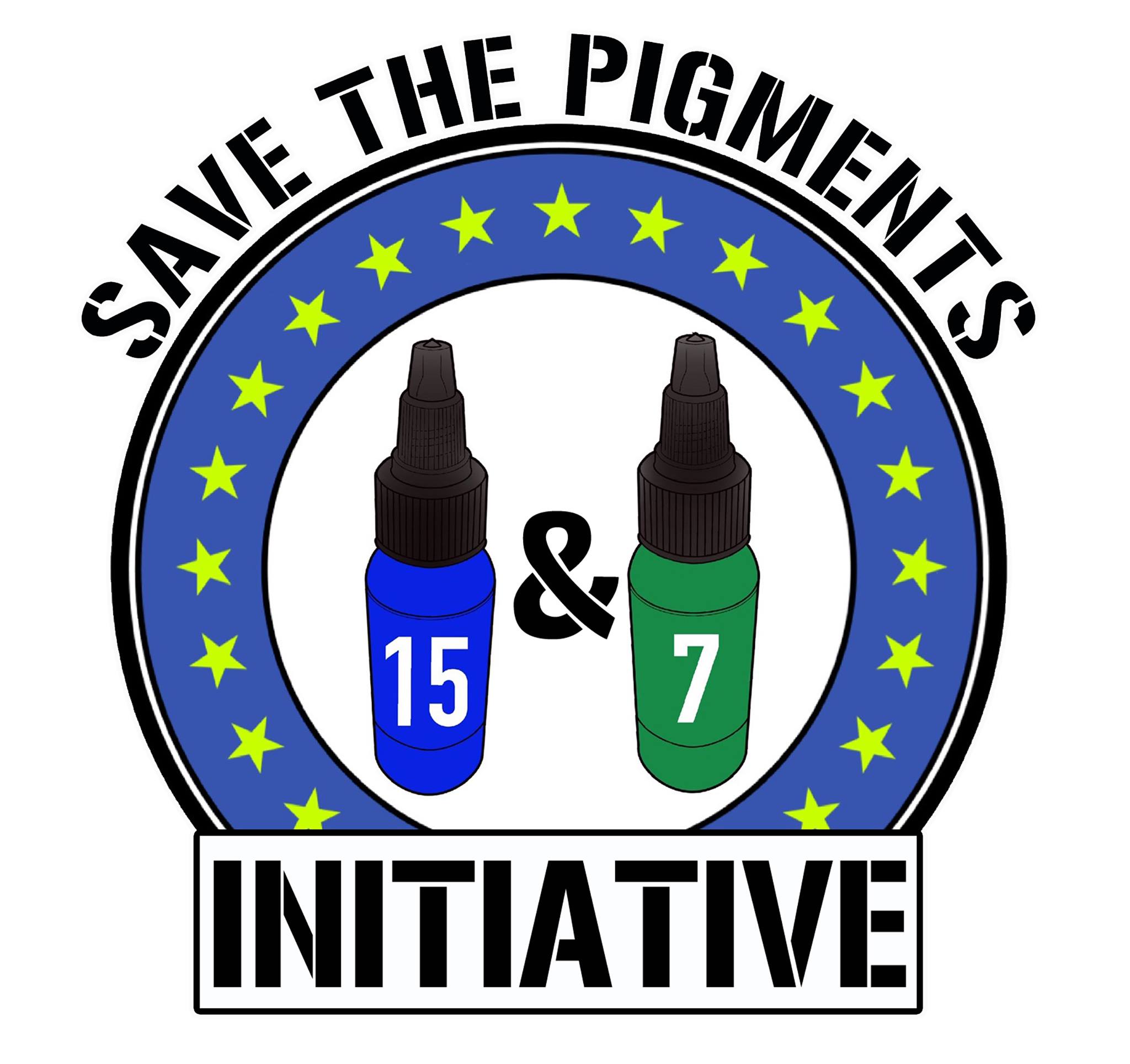
We need YOUR SUPPORT!
M.W.: Can we still support your project? How to join and where we could sign up the petition?
M.D.: The petition has already been submitted and is currently being considered by the Europarliament. Thanks to Alexander Bernhuber’s support, we have a real chance to fight against the restrictions ECHA wants to impose on us. The next step is to publish the petition on the website of the European Parliament. We strongly encourage all interested people to sign up and share it. That is really important in the era of social media and associations defending the rights of tattoo artists in different member states. After collecting a certain number of votes the petition will be completed; its initiators will be invited to Brussels to present all the arguments and to fight this blow against the tattoo industry.
Potrzebujemy TWOJEGO WSPARCIA!
M.W.: Czy nadal możemy wesprzeć wasz projekt i podpisać petycję?
M.D.: Petycja została już złożona i w tej chwili jest rozpatrywana w Europarlamencie. Dzięki poparciu Alexandra Bernhubera mamy realne szanse walczyć z ograniczeniami, jakie chce na nas nałożyć ECHA. Kolejnym etapem jest opublikowanie petycji na stronie Europarlamentu. Gorąco zachęcamy wszystkich zainteresowanych do jej podpisania i udostępniania. W dobie mediów społecznościowych oraz stowarzyszeń, broniących praw tatuatorów w różnych krajach członkowskich. Po zebraniu określonej ilości głosów petycja zostanie zakończona; jej inicjatorzy zostaną zaproszeni do Brukseli, aby zaprezentować wszystkie argumenty i odeprzeć ten cios wymierzony w przemysł tatuażu.
With a special thanks to Michael Dirks for the conversation.
